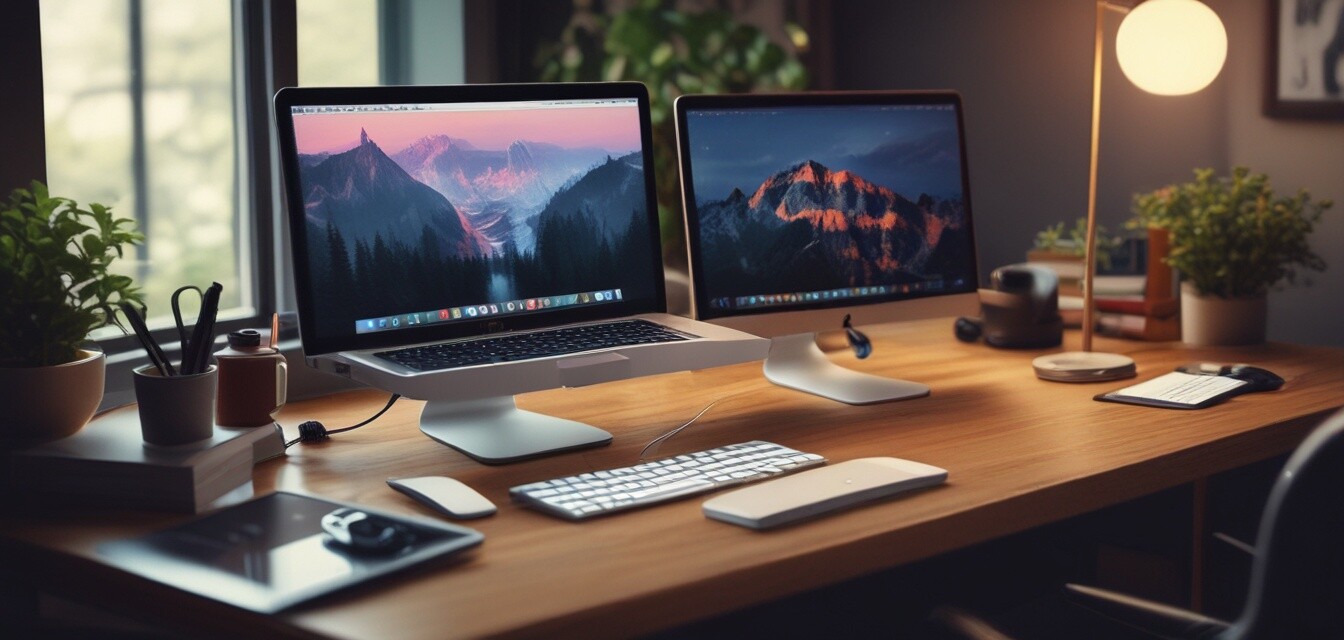
Creating an Ergonomic Workspace with Your Laptop
Key Takeaways
- Proper laptop height can reduce strain on the neck and eyes.
- Using an ergonomic chair can significantly enhance comfort.
- Incorporating regular breaks can improve productivity and reduce fatigue.
- Organizing your workspace can help maintain focus and reduce distractions.
- Lighting is crucial for preventing eye strain during long computer sessions.
Creating an ergonomic workspace is essential for enhancing comfort and productivity, especially for those who use a laptop for extended periods. This article provides practical tips to set up your workspace to minimize discomfort and promote efficiency.
The Importance of Ergonomics in Your Workspace
Ergonomics is the science of designing a workspace that fits the user’s needs. A well-structured ergonomic workspace can help prevent injuries and reduce fatigue. Here’s why you should pay attention to your workspace design:
- Reduces the risk of musculoskeletal disorders.
- Enhances comfort, allowing you to work longer without fatigue.
- Improves focus and productivity by reducing distractions.
Key Components for an Ergonomic Laptop Workspace
When setting up your ergonomic workspace, consider the following components:
| Component | Description |
|---|---|
| Laptop Placement | Ensure the screen is at eye level to reduce neck strain. |
| Chair | Use an ergonomic chair with lumbar support to maintain a healthy posture. |
| Desk | Keep your desk clutter-free and at a height that allows your elbows to rest comfortably at your sides. |
| Keyboard and Mouse | Use an external keyboard and mouse to maintain comfortable arm positioning. |
| Lighting | Utilize natural light or adjustable task lighting to reduce eye strain. |
Tips for Setting Up Your Workspace
Beginner Tips for Ergonomic Setup
- Adjust your chair: Make sure the chair height allows your feet to rest flat on the floor.
- Screen position: The top of your laptop screen should be at or slightly below eye level.
- Add a laptop stand: This will help elevate your screen to the proper height.
- Keep necessary items within reach: Place frequently used items close to avoid leaning or reaching excessively.
- Take regular breaks: Stand up and stretch every 30-60 minutes to stay refreshed.
Organizing Your Workspace for Maximum Efficiency
Once you've established an ergonomic setup, it's crucial to keep your workspace organized. Here are some tips for maintaining an effective work environment:
- Declutter your desk by removing unnecessary items.
- Use organizers to keep documents and tools in order.
- Maintain a clean workspace to help reduce distractions.
- Implement a filing system for easy access to important papers.
The Role of Lighting in Ergonomics
Proper lighting is essential to prevent eye strain and enhance productivity. Here are some tips on lighting:
- Utilize natural light when possible to create a bright, inviting workspace.
- Invest in adjustable desk lamps for targeted lighting.
- Position your computer screen to minimize glare from windows or lamps.
Conclusion
Setting up an ergonomic workspace with your laptop is vital for comfort and productivity. Incorporate these tips to improve your work environment and ensure you're working at your best. For more insightful advice on optimizing your laptop experience, check out our Expert Tips category!
Pros
- Improved comfort during extended laptop use.
- Enhanced productivity due to reduced fatigue.
- Decreased likelihood of injuries from poor posture.
Cons
- Initial cost for ergonomic furniture or accessories.
- Time investment to set up and maintain the workspace.